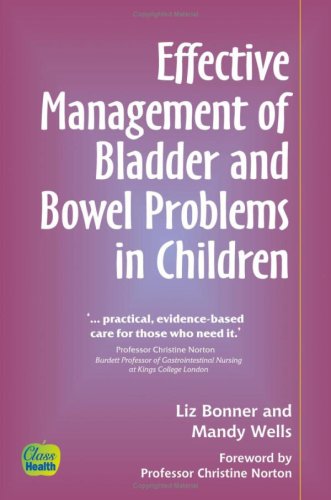

Most ebook files are in PDF format, so you can easily read them using various software such as Foxit Reader or directly on the Google Chrome browser.
Some ebook files are released by publishers in other formats such as .awz, .mobi, .epub, .fb2, etc. You may need to install specific software to read these formats on mobile/PC, such as Calibre.
Please read the tutorial at this link. https://ebooknice.com/page/post?id=faq
We offer FREE conversion to the popular formats you request; however, this may take some time. Therefore, right after payment, please email us, and we will try to provide the service as quickly as possible.
For some exceptional file formats or broken links (if any), please refrain from opening any disputes. Instead, email us first, and we will try to assist within a maximum of 6 hours.
EbookNice Team

Status:
Available4.5
8 reviews(Ebook) Effective Management of Bladder and Bowel Problems in Children 1st Edition by Liz Bonner, Mandy Wells, Christine Norton - Ebook PDF Instant Download/Delivery: 1859591655 ,9781859591659
Full download (Ebook) Effective Management of Bladder and Bowel Problems in Children 1st Edition after payment

Product details:
ISBN 10: 1859591655
ISBN 13: 9781859591659
Author: Liz Bonner, Mandy Wells, Christine Norton
(Ebook) Effective Management of Bladder and Bowel Problems in Children 1st Edition Table of contents:
Legislation underpinning the safeguarding of children and young people
The Healthcare Commission annual health check
Safeguarding vulnerable people following the Bichard Inquiry: the Vetting and Barring Scheme
Practical responses
Case history examples
Summary: what next?
References
Health promotion points
Getting to know your patient
Practical barriers
What makes a good communicator?
Communicating in a social context
References
Key points
Development of the urinary system
Development of the genital system
External genitalia
References
Ureters
The bladder
The urethra in girls
Storage of urine
Innervation and neuro-transmitters and voiding
Micturition and bladder control
Voiding
References
The colon
Anatomy
Physiology
The physiology and pathophysiology of defecation and continence
References
Assessment
Plan
Radiological investigations
Blood tests
Conclusion
References
Key Points
Definitions
Predisposing factors
Pathology/physiology
Pathway and care
Specialist services
Simple behavioural and physical interventions
Enuresis alarms
Drugs
References
Health promotion points
Promoting health
Definitions
Assessment
Treatment
Conclusion
References
Health promotion points
Clinical presentation
Diagnosis
Treatment
Pathogenesis of UTI
Pathogenesis of renal scarring
Management
Long-term outlook
Investigations
References
Continence in children with no neurological impairment
Assessment
The training programme
Newborns with neuropathic bladder
Surgical intervention
Bladder neck incompetence
Postoperative complications
References
Prevalence
Aetiology
Assessment
Treatment
References
Health promotion points
Psychological impact
Psychological aspects of treatment
Assessment
Formulating and carrying out a treatment plan
Specific strategies
Psychological support during treatment
Children with enduring continence problems
References
Key points
Risk assessment
Environmental assessment
Provision of equipment
What equipment is available?
Continence products for children
Clothing
References
Health promotion points
Catheter types
Psychological preparation
Teaching methods
Troubleshooting
Catheterising in school
Mitrofanoff
Latex allergy
References
Key points
Transitions within the school system
Child protection
Assessment
Particular issues at different stages
Conclusion
References
The Uffculme approach
Pathways and care
A nursing view of continence problems in schools
Conclusion
References
Health promotion points
The limits of practice
Combined assessment processes
References
Standards of care
Competence and proficiency
‘Essence of Care’
The way forward
References
Key points
Relating the standards to children’s needs
References
Glossary
Why is ERIC needed?
What can ERIC offer children, families and health professionals?
ERIC’s plans for the future
Other useful organisations
Appendix 2: The part played by incontinence in Victoria Climbié’s tragedy
Work with children and young people, parents, carers and families
Inter-professional work with colleagues
Index
People also search for (Ebook) Effective Management of Bladder and Bowel Problems in Children 1st Edition:
bladder management protocol
most effective treatment for overactive bladder
what is the most effective treatment for bladder cancer
management of bladder
bladder management
Tags: Liz Bonner, Mandy Wells, Christine Norton, Effective Management, Bowel Problems